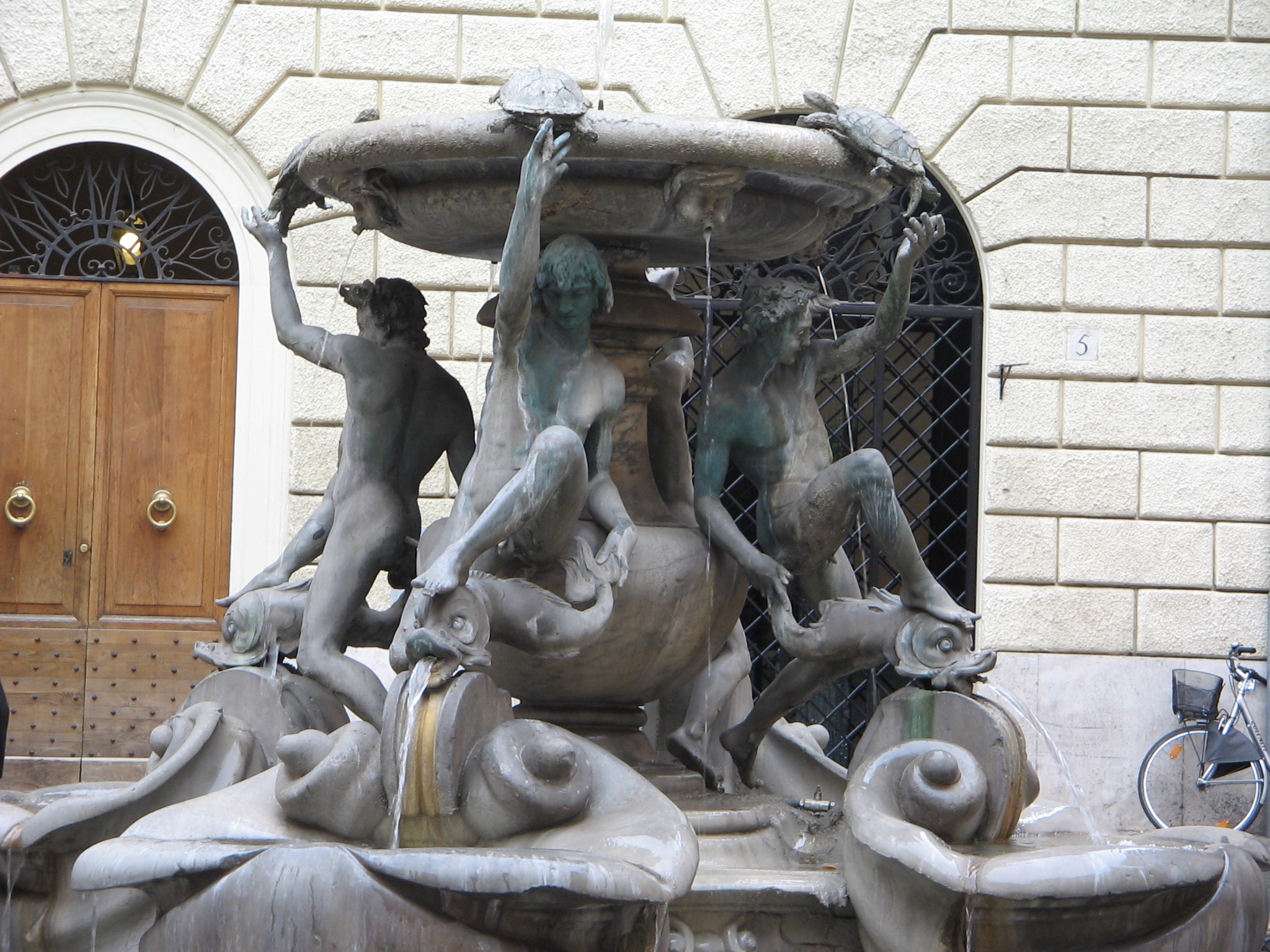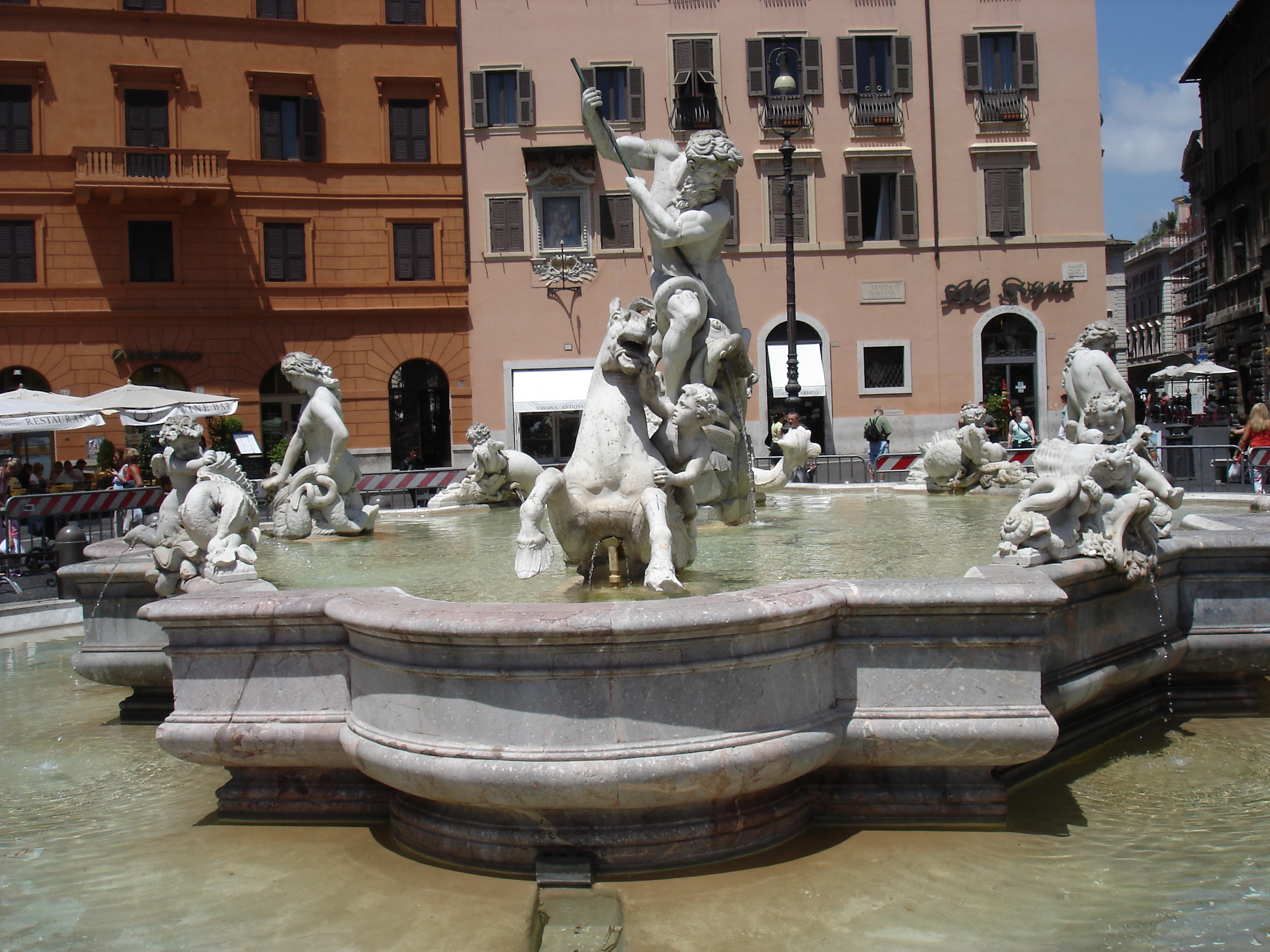Acqua Vergine is one of several Roman aqueducts that deliver pure drinking water to Rome. Its name derives from its predecessor Aqua Virgo, which was constructed by Marcus Vipsanius Agrippa in 19 BC. Its terminal castellum is located at the Baths of Agrippa, and it served the vicinity of Campus Martius through its various conduits. In an effort to restore fresh water to Rome during the Renaissance, Pope Nicholas V, in 1453, renovated the main channels of the Aqua Virgo and added numerous secondary conduits under Campo Marzio. The original terminus, called a mostra, which means showpiece, was the stately, dignified wall fountain designed by Leon Battista Alberti in . Due to several additions and modifications to the end-most points of the conduits during the years that followed, during the
| Attributes | Values |
|---|
| rdf:type
| |
| rdfs:label
| - Acqua Vergine (de)
- Acqua Vergine (en)
|
| rdfs:comment
| - Acqua Vergine is one of several Roman aqueducts that deliver pure drinking water to Rome. Its name derives from its predecessor Aqua Virgo, which was constructed by Marcus Vipsanius Agrippa in 19 BC. Its terminal castellum is located at the Baths of Agrippa, and it served the vicinity of Campus Martius through its various conduits. In an effort to restore fresh water to Rome during the Renaissance, Pope Nicholas V, in 1453, renovated the main channels of the Aqua Virgo and added numerous secondary conduits under Campo Marzio. The original terminus, called a mostra, which means showpiece, was the stately, dignified wall fountain designed by Leon Battista Alberti in . Due to several additions and modifications to the end-most points of the conduits during the years that followed, during the (en)
- Acqua Vergine ist eines von mehreren römischen Aquädukten, die reines Trinkwasser nach Rom liefern. Sein Name leitet sich von seinem Vorgänger Aqua Virgo ab, das im Jahr 19 v. Chr. von Marcus Vipsanius Agrippa erbaut wurde. Sein Endkastell befindet sich bei den Agrippa-Thermen und versorgte mit seinen verschiedenen Kanälen die Umgebung des Campus Martius. In dem Bemühen, Rom während der Renaissance wieder mit frischem Wasser zu versorgen, erneuerte Papst Nikolaus V. im Jahr 1453 die Hauptkanäle des Aqua Virgo und fügte zahlreiche Nebenkanäle unter Campo Marzio hinzu. Die ursprüngliche Endstation, eine Mostra genannt, was soviel wie Prunkstück bedeutet, war der von Leon Battista Alberti entworfene stattliche, würdige Wandbrunnen auf der Piazza dei Crociferi. Durch mehrere Ergänzungen und Ve (de)
|
| foaf:depiction
| |
| dcterms:subject
| |
| Wikipage page ID
| |
| Wikipage revision ID
| |
| Link from a Wikipage to another Wikipage
| |
| Link from a Wikipage to an external page
| |
| sameAs
| |
| dbp:wikiPageUsesTemplate
| |
| thumbnail
| |
| has abstract
| - Acqua Vergine is one of several Roman aqueducts that deliver pure drinking water to Rome. Its name derives from its predecessor Aqua Virgo, which was constructed by Marcus Vipsanius Agrippa in 19 BC. Its terminal castellum is located at the Baths of Agrippa, and it served the vicinity of Campus Martius through its various conduits. In an effort to restore fresh water to Rome during the Renaissance, Pope Nicholas V, in 1453, renovated the main channels of the Aqua Virgo and added numerous secondary conduits under Campo Marzio. The original terminus, called a mostra, which means showpiece, was the stately, dignified wall fountain designed by Leon Battista Alberti in . Due to several additions and modifications to the end-most points of the conduits during the years that followed, during the Renaissance and Baroque periods, the Acqua Vergine culminated in several magnificent mostre - the Trevi Fountain and the fountains of Piazza del Popolo. (en)
- Acqua Vergine ist eines von mehreren römischen Aquädukten, die reines Trinkwasser nach Rom liefern. Sein Name leitet sich von seinem Vorgänger Aqua Virgo ab, das im Jahr 19 v. Chr. von Marcus Vipsanius Agrippa erbaut wurde. Sein Endkastell befindet sich bei den Agrippa-Thermen und versorgte mit seinen verschiedenen Kanälen die Umgebung des Campus Martius. In dem Bemühen, Rom während der Renaissance wieder mit frischem Wasser zu versorgen, erneuerte Papst Nikolaus V. im Jahr 1453 die Hauptkanäle des Aqua Virgo und fügte zahlreiche Nebenkanäle unter Campo Marzio hinzu. Die ursprüngliche Endstation, eine Mostra genannt, was soviel wie Prunkstück bedeutet, war der von Leon Battista Alberti entworfene stattliche, würdige Wandbrunnen auf der Piazza dei Crociferi. Durch mehrere Ergänzungen und Veränderungen an den Endpunkten der Leitungen in den folgenden Jahren, während der Renaissance und des Barocks, entstanden aus dem Acqua Vergine mehrere prächtige Mostre – der Trevi-Brunnen und die Brunnen der Piazza del Popolo. (de)
|
| gold:hypernym
| |
| prov:wasDerivedFrom
| |
| page length (characters) of wiki page
| |
| foaf:isPrimaryTopicOf
| |
| is Link from a Wikipage to another Wikipage
of | |



![[RDF Data]](/fct/images/sw-rdf-blue.png)








![[cxml]](/fct/images/cxml_doc.png)
![[csv]](/fct/images/csv_doc.png)
![[text]](/fct/images/ntriples_doc.png)
![[turtle]](/fct/images/n3turtle_doc.png)
![[ld+json]](/fct/images/jsonld_doc.png)
![[rdf+json]](/fct/images/json_doc.png)
![[rdf+xml]](/fct/images/xml_doc.png)
![[atom+xml]](/fct/images/atom_doc.png)
![[html]](/fct/images/html_doc.png)